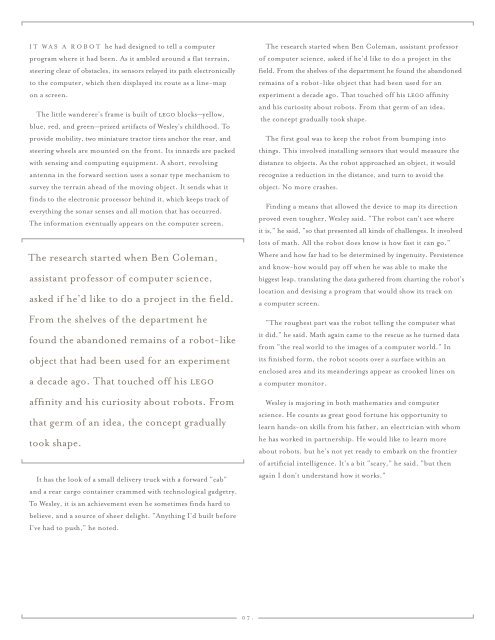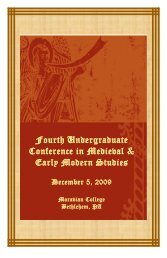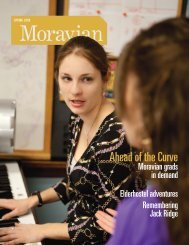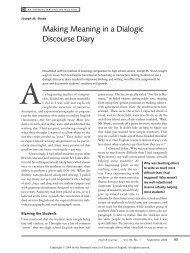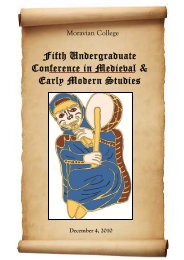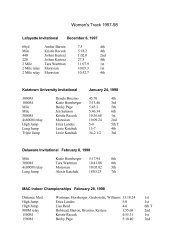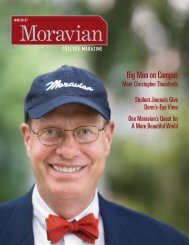You also want an ePaper? Increase the reach of your titles
YUMPU automatically turns print PDFs into web optimized ePapers that Google loves.
IT WAS A roboT he had designed to tell a computer<br />
program where it had been. As it ambled around a flat terrain,<br />
steering clear of obstacles, its sensors relayed its path electronically<br />
to the computer, which then displayed its route as a line-map<br />
on a screen.<br />
The little wanderer’s frame is built of lego blocks—yellow,<br />
blue, red, and green—prized artifacts of Wesley’s childhood. To<br />
provide mobility, two miniature tractor tires anchor the rear, and<br />
steering wheels are mounted on the front. Its innards are packed<br />
with sensing and computing equipment. A short, revolving<br />
antenna in the forward section uses a sonar type mechanism to<br />
survey the terrain ahead of the moving object. It sends what it<br />
finds to the electronic processor behind it, which keeps track of<br />
everything the sonar senses and all motion that has occurred.<br />
The information eventually appears on the computer screen.<br />
The research started when ben Coleman,<br />
assistant professor of computer science,<br />
asked if he’d like to do a project in the field.<br />
from the shelves of the department he<br />
found the abandoned remains of a robot-like<br />
object that had been used for an experiment<br />
a decade ago. That touched off his lego<br />
affinity and his curiosity about robots. from<br />
that germ of an idea, the concept gradually<br />
took shape.<br />
It has the look of a small delivery truck with a forward “cab”<br />
and a rear cargo container crammed with technological gadgetry.<br />
To Wesley, it is an achievement even he sometimes finds hard to<br />
believe, and a source of sheer delight. “Anything I’d built before<br />
I’ve had to push,” he noted.<br />
07.<br />
The research started when ben Coleman, assistant professor<br />
of computer science, asked if he’d like to do a project in the<br />
field. from the shelves of the department he found the abandoned<br />
remains of a robot-like object that had been used for an<br />
experiment a decade ago. That touched off his lego affinity<br />
and his curiosity about robots. from that germ of an idea,<br />
the concept gradually took shape.<br />
The first goal was to keep the robot from bumping into<br />
things. This involved installing sensors that would measure the<br />
distance to objects. As the robot approached an object, it would<br />
recognize a reduction in the distance, and turn to avoid the<br />
object. no more crashes.<br />
finding a means that allowed the device to map its direction<br />
proved even tougher, Wesley said. “The robot can’t see where<br />
it is,” he said, “so that presented all kinds of challenges. It involved<br />
lots of math. All the robot does know is how fast it can go.”<br />
Where and how far had to be determined by ingenuity. Persistence<br />
and know-how would pay off when he was able to make the<br />
biggest leap, translating the data gathered from charting the robot’s<br />
location and devising a program that would show its track on<br />
a computer screen.<br />
“The roughest part was the robot telling the computer what<br />
it did,” he said. Math again came to the rescue as he turned data<br />
from “the real world to the images of a computer world.” In<br />
its finished form, the robot scoots over a surface within an<br />
enclosed area and its meanderings appear as crooked lines on<br />
a computer monitor.<br />
Wesley is majoring in both mathematics and computer<br />
science. he counts as great good fortune his opportunity to<br />
learn hands-on skills from his father, an electrician with whom<br />
he has worked in partnership. he would like to learn more<br />
about robots, but he’s not yet ready to embark on the frontier<br />
of artificial intelligence. It’s a bit “scary,” he said, “but then<br />
again I don’t understand how it works.”


